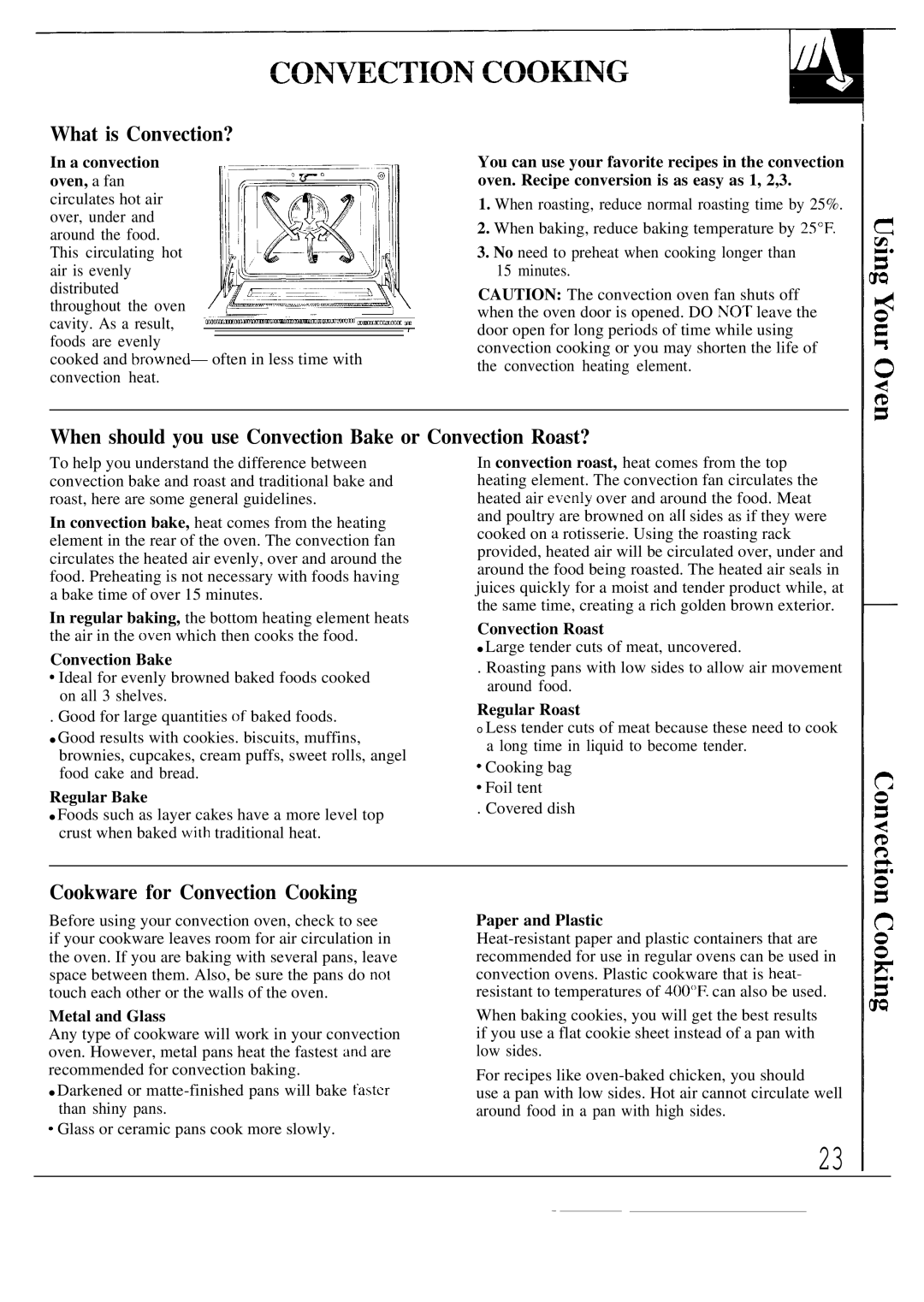
What is Convection?
In a convection |
|
|
|
oven, a fan |
|
|
|
circulates hot air |
|
|
|
over, under and |
|
|
|
around the food. |
|
|
|
This circulating hot |
|
|
|
air is evenly |
|
|
|
distributed |
|
|
|
throughout the oven | ~- | 1 | |
cavity. As a result, |
|
| I |
| omctinmmommmmmommnonmm~~ m~mo~om cm | ||
foods are evenly
cooked and
You can use your favorite recipes in the convection oven. Recipe conversion is as easy as 1, 2,3.
1.When roasting, reduce normal roasting time by 25%.
2.When baking, reduce baking temperature by 25”F.
3.No need to preheat when cooking longer than
15 minutes.
CAUTION: The convection oven fan shuts off when the oven door is opened. DO .NOT leave the door open for long periods of time while using convection cooking or you may shorten the life of the convection heating element.
When should you use Convection Bake or Convection Roast?
To help you understand the difference between convection bake and roast and traditional bake and roast, here are some general guidelines.
In convection bake, heat comes from the heating element in the rear of the oven. The convection fan circulates the heated air evenly, over and around the food. Preheating is not necessary with foods having a bake time of over 15 minutes.
In regular baking, the bottom heating element heats the air in the o}ren which then cooks the food.
Convection Bake
c Ideal for evenly browned baked foods cooked on all 3 shelves.
. Good for large quantities of baked foods.
●Good results with cookies. biscuits, muffins, brownies, cupcakes, cream puffs, sweet rolls, angel food cake and bread.
Regular Bake
●Foods such as layer cakes have a more level top crust when baked w’ith traditional heat.
In convection roast, heat comes from the top heating element. The convection fan circulates the heated air e~~enly over and around the food. Meat and poultry are browned on all sides as if they were cooked on a rotisserie. Using the roasting rack provided, heated air will be circulated over, under and around the food being roasted. The heated air seals in juices quickly for a moist and tender product while, at the same time, creating a rich golden brown exterior.
Convection Roast
●Large tender cuts of meat, uncovered.
. Roasting pans with low sides to allow air movement around food.
Regular Roast
o Less tender cuts of meat because these need to cook a long time in liquid to become tender.
*Cooking bag Q Foil tent
. Covered dish
Cookware for Convection Cooking
Before using your convection oven, check to see if your cookware leaves room for air circulation in the oven. If you are baking with several pans, leave space between them. Also, be sure the pans do not touch each other or the walls of the oven.
Metal and Glass
Any type of cookware will work in your convection oven. However, metal pans heat the fastest and are recommended for convection baking.
●Darkened or
“Glass or ceramic pans cook more slowly.
Paper and Plastic
When baking cookies, you will get the best results if you use a flat cookie sheet instead of a pan with low sides.
For recipes like
use a pan with low sides. Hot air cannot circulate well around food in a pan with high sides.
23
—
